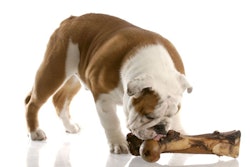
Well, that didn’t take long. Just two days in, the first pet food acquisition of the new year was announced: Cargill Animal Nutrition is buying Pro-Pet, a small manufacturer of private label and co-manufactured pet foods.
As pet food deals go, this one probably has more impact in terms of the timing (as the first of 2018) than any effects in the marketplace. Yet it’s worth noting that to date, Cargill’s role in pet food has been more on the supplier side, with its ingredients; as a pet food manufacturer, it hasn’t made much noise about its own brands in recent years. Perhaps this signals a renewed focus back on the pet food manufacturing side? Considering how huge Cargill is — its Animal Nutrition business alone comprises more than 275 facilities and 20,000 employees in 40 countries around the world — that could indeed affect the market at some point.
Other large pet food players part of recent deals
In another recent announcement, two investment firms (Global Pet Products and ING Corporate Investments) acquired all the shares of Scholtus, a pet treat maker based in the Netherlands. And the end of last year brought a couple of acquisitions involving sizable pet food companies. In late November, a Chinese agribusiness company, along with other Asia investors, purchased Australia-based V.I.P. Petfoods, which ranked as the 21st largest pet food company globally by 2016 revenues, according to the Top Pet Food Companies Database. The deal also stood as further proof of China’s rise in the global pet food market.
About the same time, Brit-Vafo Praha, a privately owned Czech pet food company and the 21st largest in Europe, according to the database, bought a share of ALLCO Heimtierbedarf, a family-owned German pet food producer. The Czech company plans to launch some of its Brit pet food products for small mammals on the German market this year.
These deals are just one sign of the global pet food market’s ongoing strength as we embark on this new year.
Not so good news: slowing growth in US pet specialty
That sign of strength is especially positive because it may help offset a much weaker indicator for the market: pet food sales growth in the US pet specialty channel slowed dramatically in 2017, according to GfK. With the channel serving as a key driver of the US pet food market — and that market being the largest and arguably most influential globally — this situation bears close watching.
A new article on PetBusiness.com, “What’s Feeding Pet Stores,” includes data from GfK on pet food growth in US pet stores, showing that sales were essentially flat from October 2016 to October 2017, with only a 0.7 percent increase. That compares unfavorably to 2016, which saw a 2.6 percent increase, and especially to 2015, with a 4.7 percent rise.
In fact, if it weren’t for decent growth in categories such as grain free — now accounting for 41 percent of products on pet store shelves in the US, sales of these pet foods rose 9.9 percent — the channel very likely would have experienced a sales decrease. Even sales growth for grain free has slowed, from 24 percent in 2015 and 15 percent last year. Other categories experiencing higher growth, such as raw (16.9 percent increase) and freeze-dried (24.3 percent), are still too small to have much of an impact on the overall market, even if some type of freeze-dried pet foods, treats or toppers now are sold in 77.8 percent of US pet stores.
In her April 2017 presentation at Petfood Forum, Maria Lange, business group director-pet care for GfK, noted that growth was starting to slow in 2016 and attributed it to four factors:
- The rising popularity of small breed dogs, who obviously eat less;
- Growing ecommerce pet food sales;
- Consumer desire for deals; and
- Premiumization of pet foods spreading outside of the pet specialty channel, into ones (such as mass market and online) that typically carry lower-priced products.
Natasha Davis, GfK’s client services manager, who will be presenting an update on pet food trends and sales in US pet specialty at Petfood Forum 2018 on April 24, told me another contributor to the flat growth was, almost counter-intuitively, the increasing popularity and sales of preserved (freeze-dried and dehydrated) pet foods. “Preserved foods typically weigh less than traditional kibble, impacting poundage sales,” she explained.
Also, because the products carry a higher price point and are relatively new, pet owners are opting for smaller packages as a trial, before taking the plunge into buying larger ones. “While there is great opportunity for dollar growth in the channel from these higher priced items, it’s taking a bit longer to have an impact because customers are entering at a lesser price point (smaller bag size),” Davis said.
Pet food growth in other channels?
It remains to be seen whether that impact might happen in 2018. Meanwhile, back to a more upbeat note, US pet retailers have professed optimism for their premium pet food sales this year, and Packaged Facts is projecting 4.4 percent growth for the total US pet food market. If growth doesn’t pick back up in pet specialty, another channel may need to make up the difference — perhaps ecommerce?


















